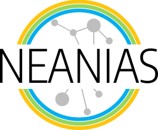The article “Selfie Drones for 3D Modelling, Geological Mapping and Data Collection: Key Examples from Santorini Volcanic Complex, Greece” was presented at GISTAM 2020.
- Authors: Fabio Bonali (1) ; Varvara Antoniou (2) ; Othonas Vlasopoulos (2) ; Alessandro Tibaldi (1) and Paraskevi Nomikou (2)
- Affiliations: (1) Department of Earth and Environmental Sciences, University of Milano-Bicocca, Piazza della Scienza 4 – Ed. U04, 20126, Milan, Italy, CRUST- Interuniversity Center for 3D Seismotectonics with Territorial Applications, Italy ; (2) Department of Geology and Geoenvironment, National and Kapodistrian University of Athens, Panepistimioupoli Zografou, 15784 Athens, Greece
- ISBN: 978-989-758-425-1
Abstract
In the present work, we tested the use of selfie drones as a tool for 3D modelling, geological mapping, and data collection. The model we used is a 0.300-kg multirotor quadcopter being equipped with a 1/2.3-inch CMOS sensor capable of capturing 12 Megapixel pictures, attached to a 2-axis mechanical gimble and with approximately 16 minutes of flight time. Test sites are located in Santorini and are characterised by different settings: i) the 1570-1573 AD volcanic crater area, in Nea Kameni island, has a mostly horizontal topography; ii) the outcrop along Vlychada beach, showing layers of the Late Bronze Age (also well-known as Minoan) eruption, has mostly vertical topography. By applying the Structure from Motion techniques to pictures collected using the selfie drone, we were capable of: i) reconstructing the two sites with centimetric to subcentimetric resolution; ii) recognizing geological features on very high-resolution Digital Surface Models and Ortomosaics; iii) mapping vertical cliffs made up of volcanic deposits on 3D Digital Outcrops Models; iv) collect new quantitative data for both sites.
Acknowledgements
This work is supported by: i) MIUR Argo3D project ACPR15T4_00098 and ii) 3DTeLC Erasmus+ Project 2017-1-UK01-KA203-036719. This article is also an outcome of Project MIUR – Dipartimenti di Eccellenza 2018–2022 and of GeoVires, the Virtual Reality Lab for Earth Sciences host at Department of Earth and Environmental Sciences, University of Milan Bicocca, U4, Piazza della Scienza 4, 20126 Milan, Italy. Agisoft Metashape is acknowledged for photogrammetric data processing. Finally, NEANIAS project is acknowledged for financial support for the submission of this paper.
More details at SciTe Press Digital Library.
